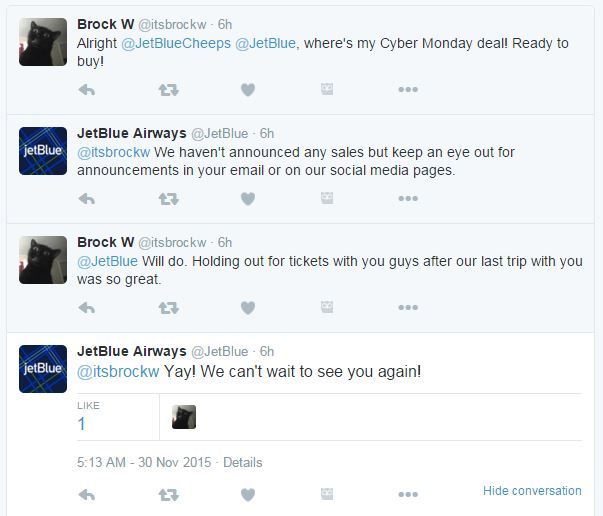30 November 2015 | Blog
Technology, your customer and you – Are you communicating too much?
30 November 2015 | Blog
Technology, your customer and you – Are you communicating too much?
While you are reading this, you probably have at least three different forms of communication on the go.
If sat at your desk, your email will be open, perhaps your internal company messaging or intranet too. Your phone could be ringing, Skype chat pinging, someone will drop your physical mail at your desk and you could be having half a conversation with the person next to you.
If you are travelling, you’ll be checking your smartphone/laptop/tablet once an hour (at least). Picking up more emails, texts, phone calls, Facebook, Twitter, WeChat and WhatsApp – The list, quite literally, is endless.
Some say it is a communication overload - too many messages. Too much noise.
Sure, you can ping messages to your customers every hour of every day on every channel but in the end, your customer will switch off. People are reaching the tipping point with their level of communication. Which is a problem when it means your passenger notifications could be getting lost in the void.
Why has communication become so complex?
Conversation is fluid and moves from one media to another. Airlines are global, 24/7 businesses and at some point, somewhere in the world, a customer is going to need information from you.
This makes for a constantly evolving conversation, which can easily slip into over-communication when passengers receive notifications across every channel and at every hour.
It’s a fine line that travel companies are required to walk. On one side, there is the risk of just adding to the ‘noise’ that over-communicating has brought on. On the opposite side, passengers expect their airlines to be present on the channel they’re communicating on in real-time – whether that’s social media, email, SMS or App push.
How to be responsible and relevant when it comes to communication and technology
Relevancy
To walk that fine line successfully, travel companies need to keep one thing in mind. Relevancy.
If you are not communicating something interesting or important to your customer, in the right way and at the right time, you will just end up adding to the endless noise.
So how can you avoid disengaging your customer, and instead be relevant, interesting and timely with your communications?
Tap into the right data sources
Imagine a flight delay has meant passengers are still waiting at the airport. They’re tired, frustrated and just want to get on with their journey. That’s when they accidentally receive a upsell or welcome email sent from data in your CRM, but not received any update as to why their flight is delayed…naturally this would have a hugely negative impact on your brand.
It’s about connecting all the dots together. Use multiple data sources such as Frequent Flyer, CRM and reservation systems to cover all the bases and ensure you get the full picture. Making use of all available data means you are sending the right message and avoiding the risk of getting it wrong, which is the fastest way to disengage your customer.
Culture plays a big part
Being adaptable to the nuances of various cultures is important to know what information to share, what channels to use and how often you contact passengers. It’s vital to keep in mind how other cultures prefer to communicate – what could be preferential for some, could be a nuisance to others.
Have a ‘go-to’ channel that your brand is renowned for using as your main channel for communicating whether that’s SMS, email or social media. Be consistent and use it as the first point of call, but support it with other communication channels on a regional or situational basis – reach out to your customers empathetically, in the way they want you to.
Don’t automate everything
 Keep your staff on the channels that require human interaction – social media and phone lines – so you can take a two-pronged approach and ensure you are giving the right information, at the right time. 15below customer JetBlue has been recognised again and again as one of the leading companies providing exceptional response and customer service on social media, 24 hours a day.
Keep your staff on the channels that require human interaction – social media and phone lines – so you can take a two-pronged approach and ensure you are giving the right information, at the right time. 15below customer JetBlue has been recognised again and again as one of the leading companies providing exceptional response and customer service on social media, 24 hours a day.
The evolution of communication
As mentioned by our Product Manager, Neil, in his recent blog post - over the past few years, communication channels previously seen as small and fragmented have become widespread and people are now comfortable using multiple channels in their day-to-day life – to an extent.
But technology is moving fast. As soon as a new channel is established, the early adopters are moving onto the next one. Brands (airlines in particular) in which people place their trust, and ultimately their safety, have a responsibility and expectation to be present across any and every channel that the customer deems necessary – don’t communicate for communication’s sake.
“The essence of strategy is choosing what not to do.” – Michael Porter
To find out more about 15below, and how we can help you enhance your passenger communications, get in touch today.

